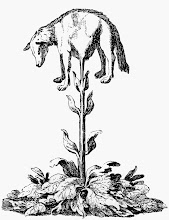Excerpt from Canadian Cities of Romance (McClelland & Stewart LTD, 1922) by Katherine Hale
STEEP streets and the ringing of church bells; the distant sea; sunset, and the lovely irregular lines of masts and spars and rigging; the view of a hazy hill topped by a martello tower;–these are some of my pictures of St. John.
An old town long ago linked by trade relations with the West Indies, a port filled with foreign sailors, it contains bales of romance never yet unpacked. I remember crossing Queen Square on a fine spring morning with a lover and historian of his city who spoke not of beauty spots, but of old buildings. "I could show you some shacks, hardly taverns, just shacks, where rum was stored and barrels were opened; and the tales of far lands that came in with the cargoes, the songs, the gestures of the South, were all a part of the old days of St. John."
When this city plays the pageant of her past she will have nearly every romantic element of the early days to draw from. As she is the oldest incorporated city in British North America such pictures mean history. Four years before Quebec was founded, Champlain cast anchor at the mouth of the river and christened the region in honour of the Saint whose day it was. That was on the 24th of June, 1604. Before that the site was known to the prehistoric peoples. The Micmacs and the Malicetes loved it; 'Glooscap,' greatest of their demi-gods, had favoured it. Their descendants wondered as they saw a white man plant the golden lilies of France.
The next picture has to do with the Lady of St. John. Her husband, Sieur La Tour, who had taken a desirable site for his French fort, was a friend of Louis XIV. Lady La Tour was a Huguenot and her dream was to found a colony. D'Aunay Charnisay, an enemy, opened a campaign against them. La Tour slipped away to Boston for help. Charnisay entered the Fort. And then occurred the heroic defense by Madame La Tour, who pitted all her slender resources against the enemy, only to meet with tragedy. Her garrison was hanged, and the lady herself died a few weeks following her husband's return. Her dream lives on in a poem by Whittier and a story by Harriet Chesney. La Tour married his rival's widow, and for 'diplomatic reasons' became a British subject...
As remembrance the permanent pictures of St. John have to do with her unique setting. She can transport you, in a morning's drive through Rockwood Park, to Scottish hills and gemlike lakes. An hour later you are on the Atlantic seaboard, facing dancing waves, or else black rocks and tawny sands if the tide is out. The fascination of her rivers is inexhaustible. The 'Reversing Falls' is of course one of the wonders of the world, and any guide book will explain the action and reaction of the swirling waters in the winding gorge. But to be interesting it should remain a mystery. I remember two great bridges, shelter houses and rainy weather. I remember that waiting for the tide, staring at red mud where I had imagined glittering waters, seemed more awesome than the spectacle itself, and the rocks, like those of Niagara, more wonderful than the waters.
.jpg)





No comments:
Post a Comment